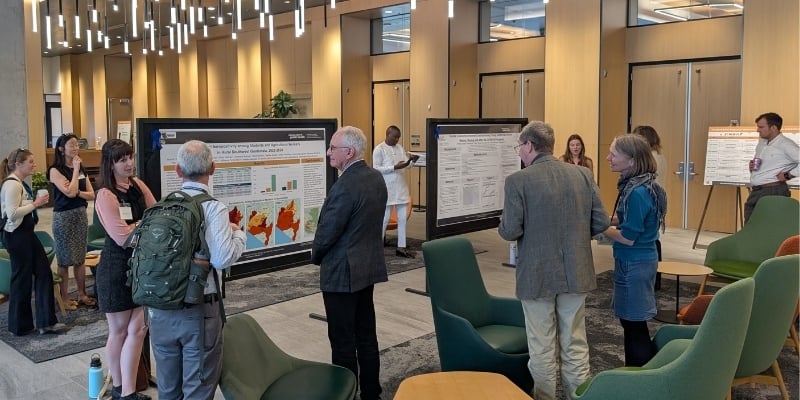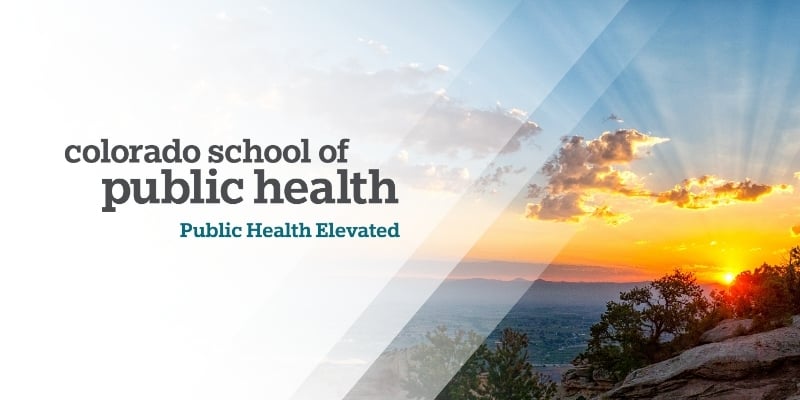A cancer diagnosis presents an immediate threat to an individual’s health and a challenge to survive the disease. For many people, cancer also undermines their financial stability. While medicine’s capacity for treating the disease has marched steadily forward, the ability of patients to pay for new and often staggeringly expensive therapies has not kept pace.
That financial reality makes maintaining employment an imperative for millions of working-age cancer survivors who must continue to pay for everyday necessities, in addition to their medical expenses. But a recently released study by the American Cancer Society co-authored by Colorado School of Public Health Dean Cathy J. Bradley, PhD, notes cancer often disrupts people’s ability to work.
Those disruptions, in turn, create “medical financial hardships” for cancer survivors that exceed those of people with no cancer history, the authors report. These hardships include problems paying their medical bills, stress and worry, and pressures to delay or forgo their care.
Working-age cancer survivors who do not have health insurance coverage (about 9%) are most vulnerable to these burdens, the authors noted. But those with private or public insurance are not immune from the threats, Bradley said.
“You don’t readily get access to care without health insurance,” she said. “Having health insurance coverage is your main access to healthcare, but it does not completely protect you from financial risk.”
Putting a human face to the cancer ordeal
To illustrate those risks, the authors present a “composite case” of a 40-year-old single mother of two young children. The woman, whom they call Emily, has been diagnosed with aggressive breast cancer that requires surgery, chemotherapy, radiation treatments and a decade of hormone therapy.
The authors describe an array of circumstances faced by many working-age cancer survivors that complicate Emily’s ability to treat her cancer while she attempts to keep her job and juggle her other responsibilities. For example:
-
Emily has health insurance through the small business where she works, but her policy has a high deductible and out-of-pocket cost provisions.
-
Based on her income, she would be eligible for Medicaid, but she lives in one of 10 states that have chosen not to expand access to it.
-
Her limited paid sick leave and vacation time are likely not sufficient to cover her expected treatment time.
-
As an employee of a business with fewer than 50 employees, she is not eligible for up to 12 weeks of unpaid job protection under the Family and Medical Leave Act. Her state offers no job protections or provisions to replace her wages based on her disability.
With data from the National Health Interview Survey, the article links these challenges that Emily faces to greater risk of medical financial hardships for millions across the country. For example, the growing pressure of these challenges could force Emily to choose between getting the care she needs or keeping her job. She could also spiral into debt, as many cancer survivors do.
“The average American cannot afford an unexpected expense of $400 a month or more,” Bradley said. “You add in the out-of-pocket coverage and associated expenses – for example, childcare and transportation – for cancer treatment, and the costs can easily exceed $400 in a month.”
A cascade of problems
Mounting financial pressures can have a “cascading impact” on working-age cancer survivors, Bradley added. For example, if Emily lost her job and her insurance coverage, her kids would also most likely lose insurance coverage. Emily would also likely find it difficult to regain whatever financial stability she had before her cancer diagnosis.
“When a person loses their job, re-entering the workforce is quite difficult, especially if you are a cancer survivor,” Bradley said. That challenge, in turn, would put her at risk of declaring bankruptcy.
Taken together, these setbacks could diminish her kids’ chances for college and their future earnings. “So you’ve made a generational impact on our society with this one case,” Bradley said.
An example of a national issue
Bradley noted that in etching the portrait of Emily’s quandary, the study authors wanted to inject life into the statistics that define an all too common problem in the United States.
“We wanted to walk through the impact [of cancer] on an individual’s life, step by step,” she said. “It makes it real for people by saying, ‘Here’s an example of a person and all the barriers they would encounter as they go through a diagnosis and treatment of cancer.’”
The study concludes by citing “many opportunities to mitigate financial hardship” through policy changes, accommodations by employers, cancer care delivery that focuses on patients’ primary needs, and efforts by patient advocacy groups and non-profit organizations.
Options for improvement
The “most critical piece,” Bradley said, is implementing universal health insurance coverage. The study notes that the United States is among a very few highly developed countries that do not provide this coverage. The same is true of paid family and medical leave.
Even without these broad policy changes, Bradley emphasized that employers can do much to support employees who receive a cancer diagnosis.
“Accommodations play a critical role,” she said, by providing employees with flexible schedules or allowing them to work at home.
“That makes such a big difference if you are undergoing treatment for chemotherapy because you can’t predict when you are going to be sick,” Bradley said. “Giving that flexibility through treatment is the single greatest thing employers can do to help their employees.”
Broader benefits of accommodation
Employers stand to benefit from relatively inexpensive changes, Bradley added. “It costs way more to replace an employee than it does to keep one,” she said.
From a societal standpoint, Bradley noted that cancer in working-age adults threatens to decrease productivity. She addressed the problem in a 2008 article in the Journal of the National Cancer Institute with K. Robin Yabroff, PhD, MBA, lead author of the current study, and scientific vice president for Health Services Research with the American Cancer Society.
Improved disease detection and greater exposures to “environmental factors,” like plastics, chemicals, cosmetics and pollution has meant a rise in the number of young people with cancer, Bradley concluded. That increases the importance of recognizing and addressing both the medical and financial ripples the disease causes in individuals’ lives.
“We tend to think of people who can’t pay for healthcare as having low income,” Bradley said. “It can happen to anybody. We can look the other way, but it is also affecting working-class and middle-class people. The impact on our society, not just on individuals, is huge.”






